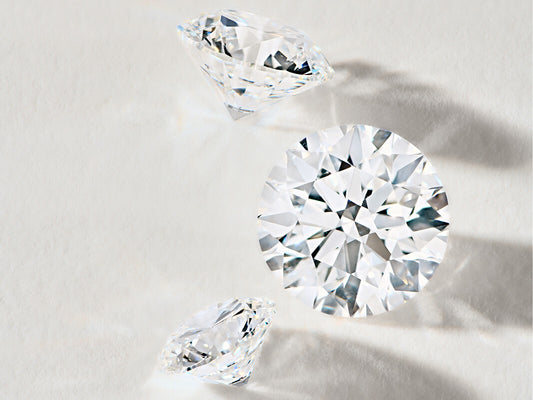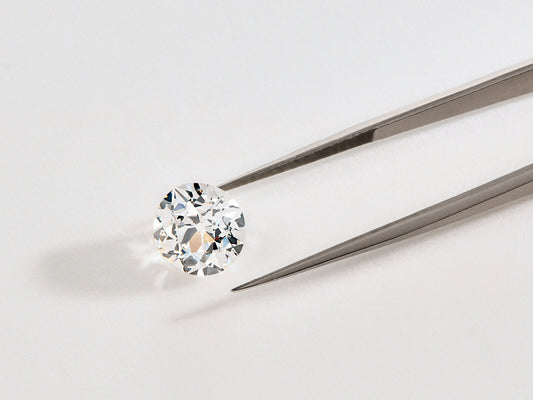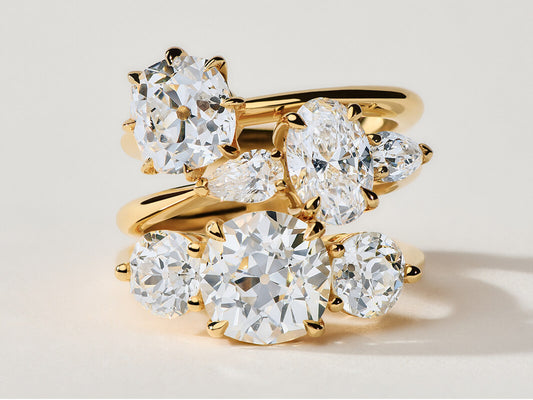Diamond clarity grading is a precise process conducted by professional gemologists. Using 10x magnification, they evaluate each diamond for the number, size, visibility, nature, and position of imperfections, as well as their overall impact on the stone's appearance. Based on these assessments, the diamond is assigned one of 11 specific clarity grades on the GIA scale. For diamonds of 1 carat or larger, Gemologists also create a unique "plot" for each diamond - a visual diagram mapping its imperfections, which serves as a fingerprint for identification. This detailed evaluation process helps to document the diamond's unique characteristics and determine its clarity grade. However, it's important to note that many of these imperfections are not visible to the naked eye, especially in higher clarity grades. When selecting a diamond, consider how the clarity grade balances with other factors like cut, color, and carat weight to find the best value for your preferences and budget.
Size
The size of an inclusion significantly influences a diamond's clarity grade, with larger inclusions generally having a greater impact. However, size is always considered relative to the diamond's overall dimensions. It's important to note that large inclusions, especially those near the surface or reaching it, can potentially affect the diamond's durability. When selecting a diamond, consider how the size of any inclusions might impact both its appearance and long-term resilience.
Number
While the visibility of inclusions is more crucial than their quantity, a higher number of clarity characteristics typically results in a lower clarity grade. However, this relationship isn't strictly linear. A few prominent inclusions might have a more significant impact than numerous tiny ones. Understanding this nuance can help you make a more informed decision when comparing diamonds of similar clarity grades.
Position
The location of an inclusion or blemish within a diamond plays a crucial role in its clarity grading. Imperfections can occur anywhere in or on a diamond, but those nearest to the table (the large, flat facet on top) tend to have the most significant impact on clarity. This is because they're more visible when viewed face-up, the typical way a set diamond is seen. Consider the position of inclusions when evaluating a diamond's overall appearance and value.
Nature
The nature of an imperfection refers to its type and depth within the diamond. Internal characteristics are called inclusions, while external ones are blemishes. Different types of inclusions can have varying effects on a diamond's appearance and durability. For instance, feathers (small cracks) near the surface might pose more risk than deeper, more stable inclusions. Understanding the nature of inclusions can help you assess a diamond's long-term value and resilience.
Relief
Relief describes how distinct an inclusion or blemish appears in contrast to the diamond itself. Low relief inclusions, which are transparent or white, are less noticeable than high relief (dark) inclusions. The greater the relief, the more it impacts the overall clarity grade. However, the visibility of an inclusion's relief can vary under different lighting conditions. When examining a diamond, consider how its inclusions appear under various lights to get a comprehensive understanding of their impact on the stone's appearance.




